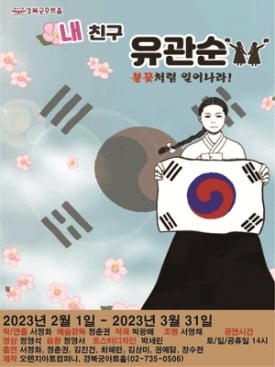Greek mythology helps understand the history of Europe, while the Bible helps understand the history of the United States. To understand Korean culture, it is very helpful to read the painful historical events of Korea. Because of its geographic location between Japan and China, Korea has suffered from many wars and conflicts.
In particular, the Japanese Occupation and the Korean War are major historical events that one must know to understand Korea. In the stifling grasp of the powers, some renounced their nation to survive, while others renounced their lives. Some of the musicals that are set in that period are Lost Face 1895, the history of Empress Myeongseong and people of the palace, and My Friend Yu Gwansun, which covers the life of Yu Gwansun, the most famous independence activist in Korean history.
Other stories depict those who strove to write their stories in the turmoil of history. One such figure is Choe Buk, a Joseon period painter famous for his eccentricity. The musical Chilchil (77), which details his life, is a story of a man who longs for freedom in the bondage of history.
Chilchil
Escape from History's Bondage, A Cry of Freedom
This is a factional story of Choe Buk, a master of landscape painting and an eccentric outsider who was active under the reign of King Sukjong of the Joseon Dynasty, during the mid-18th Century. It is a story of a man who had abilities far beyond his station in a period of rigid social hierarchy. The title, Chilchil (77) refers to two Sino-Korean characters, “七七,” as a division of the character “北” used in the name of Choe Buk (崔北). It symbolizes his mental state.
Choe Buk is a painter who depends on painting for his livelihood. His landscape paintings are massively popular, to the point that many buyers stay up throughout the night to purchase his paintings. The painter, however, does not share their enthusiasm. In fact, his eccentric ways border on scandalous. The man rips apart completed paintings, drowns them in water to ruin them, and even pokes his eyes as a refusal to an aristocrat’s request to paint. His only friend left in this world is Mumyeong, his best friend. One day, Choe Buk visits the Geumgangsan Mountain with Mumyeong. There, he faces the demons of his past and completes magnum opus. Wonjun, a powerful aristocrat, visits Choe Buk to purchase the painting and starts telling him a story, apparently as a part of his payment for the painting.
The Eastern-style papers that fill the stage act as a canvas for painting in one scene, and as snow in Winter for another. As the painter's brush moves in the air, ink and wash painting appears from a beam projected on the wall. The minimal use of color on stage seems to invoke the aesthetics of traditional ink and wash painting. The numbers likewise make use of motifs from traditional Korean music.
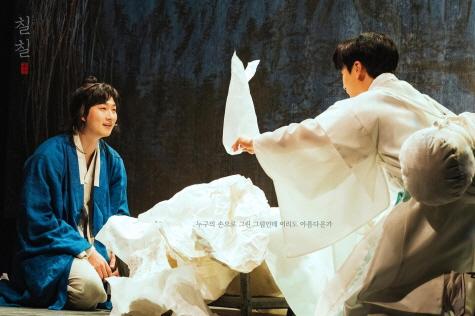
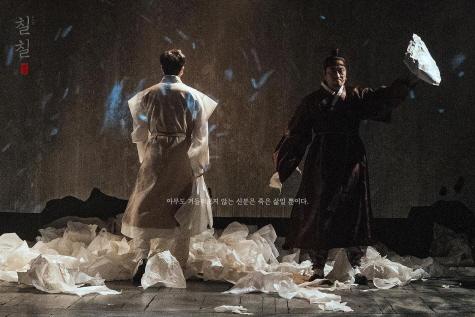
- Genre
- Musical
- Period
- November 23, 2021 (TUE) – February 27, 2022 (SUN)
- Place
- Dream Art Center Hall 2
- Subtitles Provided
- -
- Age Limit
- 12 years old and over
- Running Time
- 90 min
- Date & Time
- Tuesday–Friday at 20:00, Saturday, Sunday, and public holidays at 14:00 and 18:00
- Inquiries
- Interpark
My Friend, Yu Gwansun
The One who fought against the Japanese Occupation
Many courageous souls fought back against the oppression during the Japanese Occupation. One such activist is Yu Gwansun, who was an organizer for the March First Independence Movements in 1919 at the age of 16. Even a century after her death by torture in Seodaemun Prison, she still occupies a place of honor as a "big sister" for all Koreans. This musical is easy to understand for being organized in the format that Nam Dongsun, a fellow independence activist and a friend of Yu Gwansun, tells the story to children.
Dongsun and Gwansun are childhood friends. One day, Gwansun notices Dongsun using Japanese out of habit and becomes angry, telling her that Koreans should use the Korean language. Gwansun tells Dongsun that she wants to save the nation from the imperialist Japanese oppression and become a guardian star that watches over Korea. Dongsun promises Gwansun that she will accompany her as a friend-star shining next to her. Despite the poverty, Gwansun is a hard-working student who manages to enter the girls' mission school Ewha Hakdang in Gyeongseong (currently Seoul) with the help of a missionary. There, she meets other students and teachers who share her drive. Gwansun makes up her mind to dedicate herself to the struggle. She visits her hometown and tries to organize the Independence March there, but is warned by a police officer to not engage in rabble-rousing.
The musical makes excellent use of the small theater format, with actor-audience interactions like actors climbing down from the stage to distribute the Korean flag. The theater also has a signboard that details the history of independence activists, including Yu Gwansun.
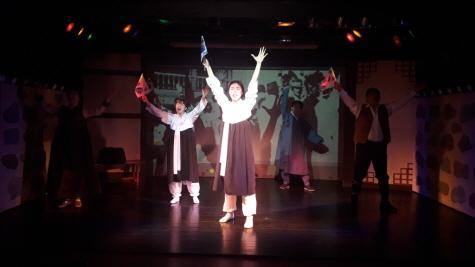
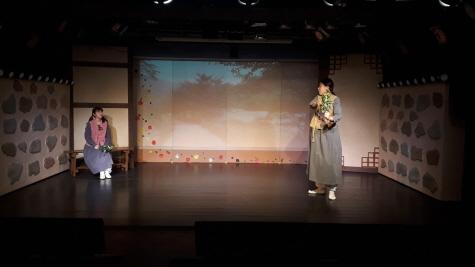
- Genre
- Musical
- Period
- February 15 (TUE) – March 30 (WED), 2022
- Place
- Gyeongbokgung Art Hall
- Subtitles Provided
- -
- Age Limit
- Above 24 months of age
- Running Time
- 80 min
- Date & Time
- Saturday, Sunday, and public holidays at 14:00
- Inquiries
- Interpark
Lost Face 1895
The Beauty of Korean Group Dance on Stage
This is a long-awaited large-scale project put on stage by Seoul Performing Arts Company, one of the foremost performing arts organizations in Korea. This year marks the fifth production of this unique performance, which, since its premiere in 2013, garnered much praise and popularity through its unique combination of the stage play, music, and dance. Unlike King Gojong, who enjoyed photography, Empress Myeongseong never left behind a single photograph. Why is that? This musical is a masterclass in historical faction, which combines historic figures and events with the imagination of the writer.
During the Military Mutiny of 1882, Hwi speaks ill of the royal court in front of the queen in a refuge and loses his entire family. He swears revenge and becomes an assistant to the royal photographer. Seonhwa, his fiancée who became a lady of the court, disparages him from his search for vengeance. Meanwhile, a Japanese reporter, who is in on the plot to assassinate the Empress, looks for the photographs of the Empress but fails to find any. When Seonhwa is out of the court on an errand, Hwi asks her to take a photograph in opulent clothes, and the reporter steals the photograph, believing it to be a photograph of the Empress.
The defining character of this performance is its delicate examination of Empress Myeongseong as a person, rather than focusing on her life as an assassinated public figure. The group dances with majestic music impress audiences with its flamboyant, uniquely Korean character. Costume design, lighting, and background likewise reflect the harmony put into the production of this performance.
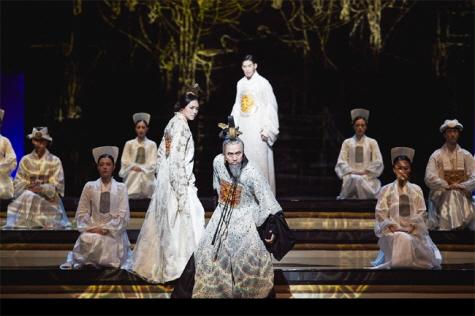
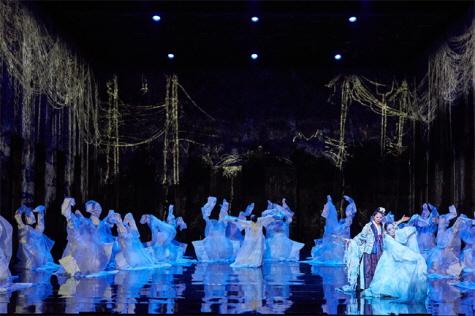
- Genre
- Musical
- Period
- March 5 (SAT) – March 20 (SUN), 2022
- Place
- CJ Towol Theater in Seoul Arts Center
- Subtitles Provided
- -
- Age Limit
- Above the age of 8
- Running Time
- 160 min
- Date & Time
- Tuesday - Friday at 19:00, Saturday and public holidays at 14:00 and 19:30, Sunday at 14:00 and 18:30
- Inquiries
- NAVER

